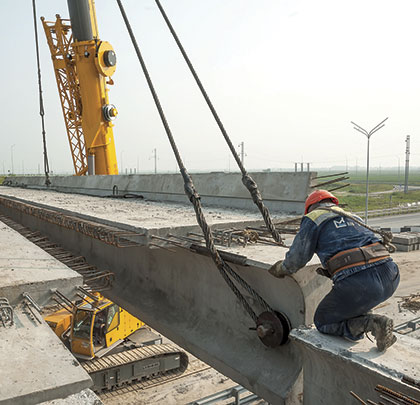Shortly after issuing a citation to an employer, OSHA will often agree to reduce the penalty amount provided the employer agrees not to contest it. But could settling invite further trouble? For a number of reasons, contractors should give considerable thought before entering into an early settlement with OSHA.
YOU NEED TO MOVE QUICKLY
Upon receipt of a citation, you have three basic options: accept the citation as-issued (this is almost never the best option); request an informal conference and attempt to settle or convince OSHA to withdraw the citation; or contest one or more parts of the citation. Never ignore a citation—otherwise critical rights may be lost. Once you have the citation, you have only 15 business days to appear at an informal conference and contest it.
POTENTIAL “COST” OF SETTLING
In most cases, OSHA will be willing to reduce the penalty amount at the informal conference—provided you settle and agree not to contest the citation. While settling an OSHA citation for less may be an attractive option—and make financial sense in the short term—it’s important to take a longer view of the future potential harm to your business. Instead of “buying your peace,” you may be buying trouble for a number of reasons.
All of your sites are fair game for OSHA, meaning another citation at any other worksite could result in a “repeat” or “willful” violation—which carry penalties of up to $126,749 per violation. If the initial citation relates to recurring hazards inherent in your operations (e.g., working at heights), there may be an increased risk of the same or substantially similar conduct occurring in the future despite your best efforts to maintain an OSHA-compliant site at all times. In one somewhat recent high-profile matter, a retailer was cited in eight different states in connection with 13 separate inspections, resulting in a corporate-wide settlement of $825,000.
A citation also may be admissible as evidence of negligence in any subsequent personal injury or wrongful death case. Although state workers’ compensation laws may prevent an injured employee from taking direct action against his or her employer, the employer may nevertheless be impleaded into the case by the direct defendants (e.g., the owner or general contractor). Also, in view of OSHA’s multi-employer citation policy, multiple entities at a construction site can be deemed an employer and cited. As a result, a citation may be admissible as evidence of negligence, or “negligence per se” in some states, against any of these “employers.” For these reasons, it is critical that any settlement agreement expressly state that the violation is not to be taken as an admission of guilt for the purpose of any proceeding other than one arising under the Occupational Safety and Health Act.
Although the facts and circumstances of every case may be different, settling could also damage your industry reputation; expose your brand to negative press; or lead to decreased competitiveness, loss/disqualification of private and public contracts, and increased insurance costs.
CONSIDER CONTESTING THE CITATION
It is important to give an OSHA citation significant attention—analyze it thoroughly, strategically, and through a legal lens. For example, can OSHA satisfy its burden of proof and establish the four elements necessary to prove a violation? Are any affirmative defenses applicable? Is the citation factually inaccurate, misleading, or incomplete? Do witnesses exist who can rebut OSHA’s claims?
If you can do so in good faith, contesting a citation is often the best option. By doing so, you’ll be given time to fully investigate the situation and present your side of the story—plus evidence—at a future hearing. Using time and resources to conduct an investigation is a well-spent investment that will reduce your future potential risk and exposure. ■

About the Author: Michael Rubin is a partner in the law firm Goldberg Segalla, where he serves as chair of the OSHA and Worksite Safety Practice Group. Michael represents employers across multiple industries in connection with OSHA inspections, investigations, and enforcement actions. He has on-the-ground experience investigating accidents and his practice includes negotiating for the withdrawal and settlement of citations, contesting citations, and litigating matters before the Occupational Safety & Health Review Commission. He can be reached at 716.844.3477 or mrubin@goldbergsegalla.com.
_________________________________________________________________________
Modern Contractor Solutions, February 2017
Did you enjoy this article?
Subscribe to the FREE Digital Edition of Modern Contractor Solutions magazine.

Does Settling an OSHA Citation Make Good Business Sense?


